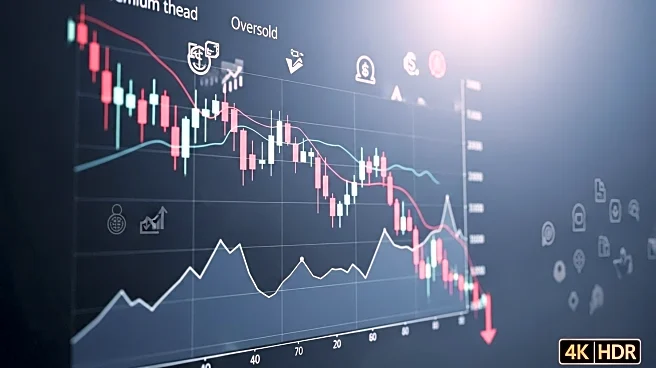What's Happening?
Home Depot has experienced a significant downturn, with its stock price declining by approximately 12% over the past 18 days. The current price level is approaching a long-term support zone near $380, which has historically been a point of both bounce and pullback for the stock. Technical indicators such as the MACD and RSI are being closely monitored for signs of a potential reversal. The MACD line has not yet crossed above the signal line, indicating that a reversal is not confirmed. Similarly, the RSI is below 30, suggesting the stock is oversold, but confirmation is awaited for it to climb back above 30.
Why It's Important?
The potential rebound of Home Depot's stock is significant for investors looking to capitalize on a trend reversal. The use of options, specifically a bull call spread, offers a defined-risk strategy to bet on the stock's recovery. This approach allows investors to manage risk while potentially achieving a 100% return if the stock finishes at or above the short strike by expiration. The strategy is particularly relevant for those interested in technical trading and options strategies, providing a structured method to engage with the stock market during volatile periods.
What's Next?
Investors are advised to wait for confirmation from technical indicators before executing the bull call spread strategy. The MACD and RSI need to signal a reversal for the strategy to be viable. If these indicators confirm a bounce, the stock price is expected to rise to the 380-390 range, making the bull call spread a potentially profitable move. Traders should remain vigilant and ready to act once the technical signals align with the anticipated price movement.
Beyond the Headlines
The broader implications of Home Depot's stock movement reflect the challenges faced by retail giants in maintaining stock value amidst fluctuating market conditions. The use of technical analysis and options trading highlights the increasing reliance on sophisticated financial strategies to navigate market volatility. This trend underscores the importance of financial literacy and strategic planning for investors seeking to optimize their portfolios.











